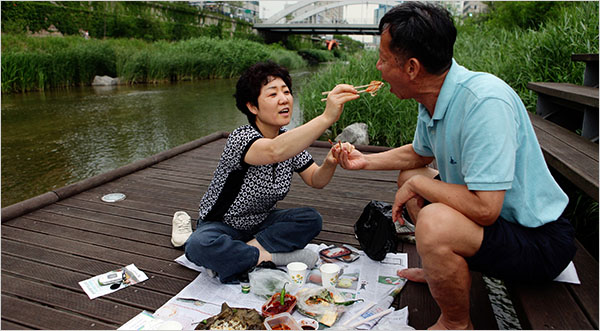
Edible walls are a new idea alongside green roofs and green walls: maximizing urban space for plants and food. A New York Times article discuss how a collaborations between garden designers and a metal fabricator to create relatively simple soil and drip water systems that support lettuce, tomatoes, cucumbers, bell peppers, spinach, leeks, and even baby watermelon. The article mentions an antecedent in espaliered fruit trees in European cities during the Middle Ages. Recently, edible walls are being used in a Los Angeles homeless shelter to feed the residents and generate a small income.



